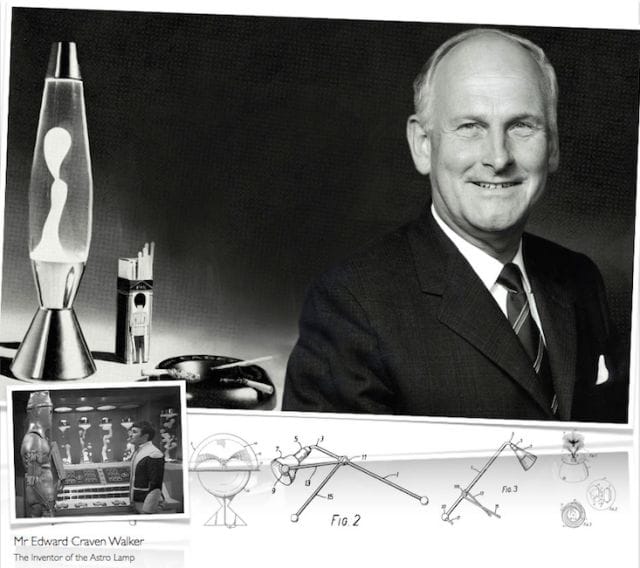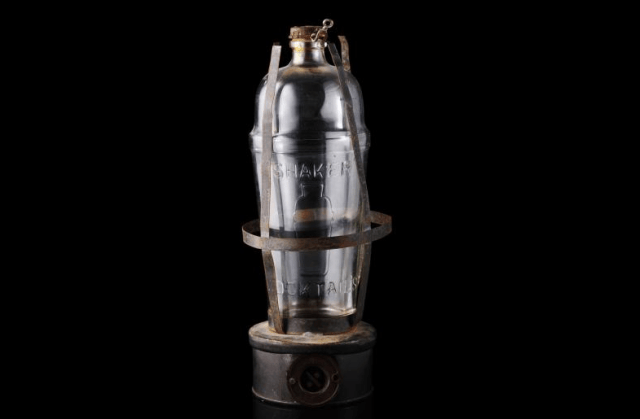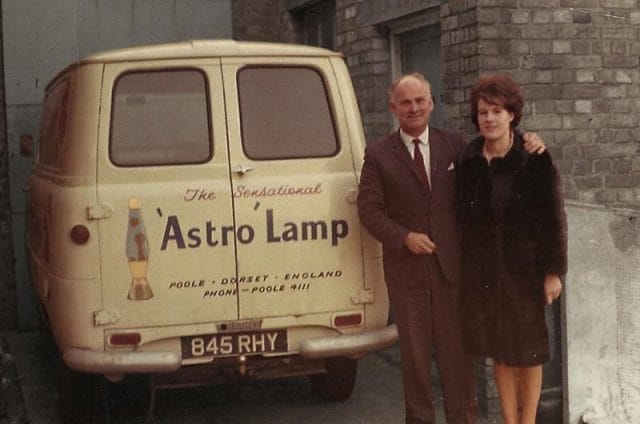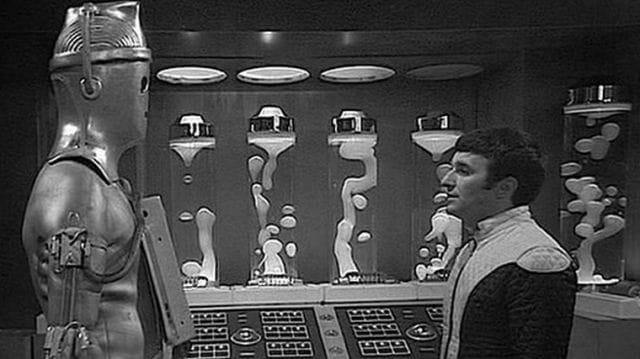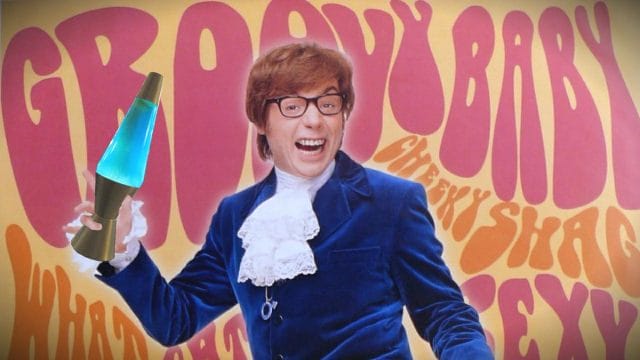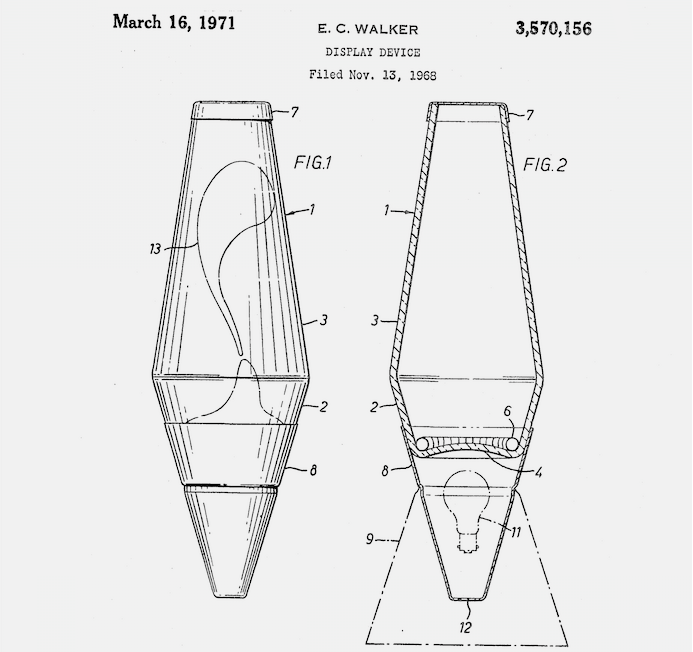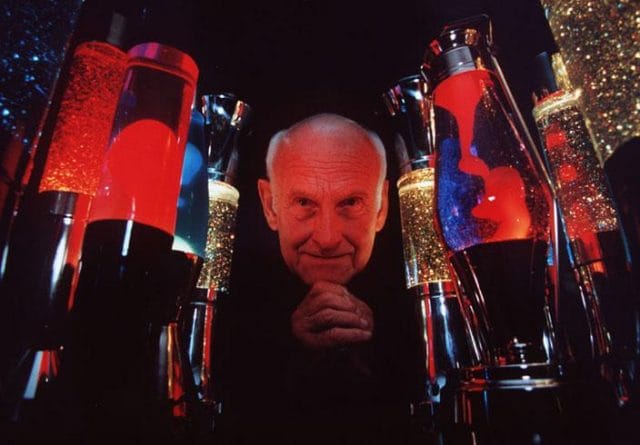It’s rare that one invention so perfectly embodies an entire era — evokes, with each kaleidoscopic orb of wax, the trippy mind-state of a generation. It’s rarer yet for that invention to be a lamp filled with viscous, indeterminable sludge.
But for some time in the 1960s, the lava lamp was just that: with its slow-rising, multicolored contents and space-esque profile, it seemed to effortlessly emulate the spirit of psychedelia. In the 1990s, after it had been written off as a bygone fad, the lava lamp rose again, stronger than ever — this time as the reigning champion of an acid-fueled counterculture rebellion.
A glance into the strange lamp’s past reveals an even stranger history: its inventor, a World War II veteran turned ardent nudist, came up with the idea while drunkenly transfixed by a strange gadget at a pub.
The Enterprising Nudist
In the English county of Dorset, Edward Craven Walker was a curious character.
Born in 1918, he served as a Royal Air Force pilot in World War II and flew multiple photographic reconnaissance missions over enemy territory in Germany. Post-war, Craven Walker lived in a small trailer behind a pub in London, built a successful travel agency, and sought to bring together people from the far reaches of the world. Throughout his early life, he “maintained the trim fighting figure and brisk demeanor of an R.A.F. officer.”
Then, following a “life-changing” trip to the southern coast of France, the clean cut ex-squadron leader shed his uniform and embarked on a career as a nudist filmmaker. He became a pioneer in the genre. In 1960, under the pseudonym Michael Kaetering, Craven Walker produced “Traveling Light,” a short film featuring a naked woman performing underwater ballet.
The film was a box-office success, running for six months in a major London theatre before being distributed around the world. It also secured Craven Walker a small fortune, which he subsequently invested in constructing one of the largest nudist camps in the United Kingdom. His new passion would stir much unrest in his life: he’d re-marry four times and become embroiled in controversy after banning obese people (who he called “fat fogies”) from his resort.
But first, Craven Walker would invent one of the defining relics of 1960s psychedelia.
Less-Than-Eggciting Origins
Early lava lamp prototype, using a glass shaker (1960)
On a presumably rainy day in the mid-1950s, Craven Walker paid a visit to Queen’s Head, a small pub southwest of London. When he sat at the bar to order his first pint of Guinness, he noticed something strange perched beside liquor bottles on a shelf.
A glass cocktail shaker full of water and oil blobs sat on a hot plate; upon being heated, the oil would rise to the top of the shaker. When Craven Walker inquired what this strange device was, the barkeep told him it was an egg timer: in just the amount of time it took the oil to rise, an egg could be fully cooked. Years earlier, a regular at the pub, Alfred Dunnett, had built the contraption, Craven Walker was told — but it was only a one-off, and Dunnett had since passed away.
Determined to pursue the idea further, Craven Walker contacted Dunnett’s widow and purchased the man’s patent for a sum of less than £20 (about $30 USD). For the next decade, between his nudist philandering and cinematic pursuits, Craven Walker set out to craft this rudimentary egg timer into an interior decoration.
Using an old empty bottle of Orange Squash (“a revolting drink [Craven Walker] had in England growing up”), he paired two “mutually insoluble liquids” — water and wax — with a few secret chemical ingredients (one of which was purportedly tetrachloride, an agent that added weight to the wax). To heat the lamp, Craven Walker enlisted a specialized, high-output bulb and encased it a protective base.
The physics behind Craven Walker’s invention relied on the Rayleigh-Taylor Instability, a physical law that explores the instability produced by a lighter fluid pushing a heavier fluid. When the bulb heated the lamp, the wax was liquified into a giant, resting blob; as the wax expanded, it became less dense and rose to the top, where it invariably cooled (as a result of being further from the heat source), and sunk back down. This process would continually repeat itself while the bulb was activated.
By 1963, Craven Walker had perfected his design. He donned his invention the “Astro Lamp,” erected a small factory in his backyard, and set out on a quixotic quest to promote it. “Edward was very focused, driven, full of ideas, and when he had an idea he would see it through to the end,” Craven Walker’s wife, Christine Baehr, later told the BBC. “But we didn’t have any online technology — we literally had to go around in a van.”
The High Times of the Astro Lamp
Craven Walker and then-wife Christine Baehr beside the Astro Lamp van (1963)
At first, the couple had a little trouble selling the Astro Lamp to local stores — particularly those which catered to higher-end customers. “Because it was so completely new we had to convince people it was worth going with, particularly when it came to selling,” recalled Baehr. “Some people thought it was absolutely dreadful.” Upon seeing the lamp, one buyer for Harrods (the Saks Fifth Avenue of England) called them “disgusting” and ordered they be taken away immediately.
To combat the hatred the lamp provoked, Craven Walker decided he’d re-brand his invention. In the years following World War II, there had been a rebellion against the dull, boring nature of interior design. People wanted more color, more excitement — and with the introduction of new printing and dyeing methods, flamboyant household items were coming into vogue. Craven Walker capitalized on this, and set out to cast the Astro Lamp as a high-end, wacky household fixture.
He created his own company, Crestworth, to market the lamp, and took out full-page spreads in magazines featuring suavely-dressed men touting the Astro Lamp as an item of “sophisticated luxury.”
Original Astro Lamp advertisements, c.1963 (click for higher res image)
Craven Walker offered the original Astro Lamp in 20 color combinations (five options for choice of “fluid color,” and four for the color of the wax), and branded it using words like “elegant,” “powerful,” and “rich.” With its new appeal, stores began opening up to the contraption and it soon became a hit — but not in the way Craven Walker had intended.
By the mid-1960s, LSD and other psychedelic drugs had snaked their way into British culture. A rising hippie counterculture, fueled by bands like Pink Floyd and The Yardbirds, was increasingly on the prowl for mind-bending experiences. With its trippy, globular formations and low-light ambience, the Astro Lamp fit the bill. While the lamp’s “sophisticated” marketing got its foot in the door, it found its eventual customer base in the revolutionaries of psychedelia. Craven Walker responded to his new buyers with measured enthusiasm. “If you buy my lamp,” he stated in one ad, “you won’t need drugs.”
“Everything was getting a little bit psychedelic,” Baehr recalled of Craven Walker’s new target audience. “There was Carnaby Street and The Beatles and things launching into space and he thought it was quite funky and might be something to launch into.”
The lamps gained steam, and soon enterprising Americans sought to introduce Craven Walker’s product abroad, where psychedelic culture was igniting. At a German trade show in 1965, two businessmen, Adolph Wertheimer and William Rubinstein, bought the North American manufacturing rights for the Astro Lamp, established an office in Chicago, and renamed it “Lava Lite.” Backed by expert marketing and fueled by 1967’s Summer of Love, the lamp began making cameos in major television programs and films. A red model debuted in a 1968 episode of Dr. Who; this was followed by appearances in The Prisoner, The Avengers, and James Bond.
Lava lamps prominently featured in “The Wheel in Space,” a 1968 episode of Dr. Who
For Craven Walker and his wife, there was a defining moment where they knew they’d truly achieved success. “The day a store in Birkenhead phoned to say that Ringo Starr had just been in and bought a lava lamp,” recalls Baehr. “Suddenly we thought, ‘Wow, we have hit it.’”
By the end of the 60s, Craven Walker was selling seven million Astro Lamps per year, and had made himself a multi-millionaire.
Like most novelty items, lava lamps were a fad; as hippie culture faded in the late 1970s and blacklight posters reigned supreme, Craven Walker saw a sharp decline in sales. To no avail, Craven Walker tirelessly rolled out new products, none of which came remotely close to the sales numbers achieved by the Astro Lamp. Despite this, he clung to his company, believing that lava lamps would one day regain the graces of counterculture society.
The Second Coming of the Lava Lamp
For nearly two decades, the lava lamp faded into obscurity. By the late 1980s, Craven Walker’s sales had declined to only 1,000 lamps per year, and he sat on a stockpile of thousands of Astro Lamps. Then, miraculously, the groovy orb came back to life.
Cressida Granger, a 22-year-old who ran a small antiques booth in Camden Market (a hipster hangout in north London), noticed old, “vintage” lava lamps were selling and decided to take action. In early 1989, she contacted Craven Walker and expressed her interest in purchasing his company, Crestworth. At Craven Walker’s behest, the two met up at a nudist camp (at Granger’s behest, both were fully clothed); it was here, amid sun-tanned bottoms, that Craven agreed to let Granger enter a partnership with him.
Granger took over operations as managing director and sales soon increased. In 1988-89, Britain experienced what would later be called the Second Summer of Love. The rise of Ecstasy, acid house music, and MDMA-inspired rave parties ignited an “explosion in youth culture” reminiscent of the 1960s hippie movement. Hedonism, rampant drug use, and chemically-enhanced positive vibes were back in style — and with them, lava lamps.
In 1991, Craven Walker’s original patent (approved in 1971) expired, opening the playing field for competitors. Luckily, recalls Granger, “People didn’t realize the patents had run out,” and she, along with Craven Walker, enjoyed “a lovely period of monopoly in the 90s.”
Edward Craven Walker’s original patent for the lava lamp (1971). While there is a bit of controversy surrounding the original patent holder (read here), there is no doubt that he popularized the device.
As per the pair’s initial agreement, Granger slowly bought out Craven Walker’s interest in Crestworth. By 1992, she’d re-named the company Mathmos, moved into their manufacturing facility, and produced lamps using Craven Walker’s staff, machinery, and components.
By 1998, Granger had gained sole ownership of the company and successfully navigated the resurrection of the lava lamp, bringing sales from 1,000 units per year to 800,000 per year. Sales surged in the late 1990s, largely thanks to the release of Austin Powers: International Man of Mystery (1997), which regenerated interest in psychedelic culture. The decade was so wildly profitable for Mathmos that Granger claims more units were sold the second time around than in the 1960s — a rare feat for a novelty item. Mathmos has also navigated through some unwanted publicity (in 2004, for instance, a man was killed when his attempt to self-heat a lava lamp on a stovetop resulted in an explosion and a glass shard through the heart).
Though his role in the company diminished, Craven Walker stayed on as a consultant for Mathmos until his death in 2000. Today, the lamps continue to be produced in the original facility in Dorset, using the exact same formula invented by Craven Walker over 60 years ago (it’s still a secret to this day).
In recent years, the company has encountered pressure to shift their operations to China — a move that would make production much cheaper, but Granger hasn’t acquiesced. Bottles are still filled by hand (one employee is able to get through about 400 per day); as a result, Mathmos lamps start at $80 while cheaper, mass-produced lamps sell for as little as $15. But according to Granger, heritage is more important.
“I think it’s special to make a thing in the place it’s always been made,” Granger told HuffPost in 2013. “The bottles are made in Yorkshire, the bases are made in Devon, the bottles are filled in Poole and the lamps assembled to order in Poole.”
Lasting Impact
Craven Walker’s original lava lamp was relatively plain: a 52-ounce tapered glass vase, a gold base, and red “lava” in yellow liquid. Today, thousands of variations exist, from sparkly Hello Kitty-themed lamps to 6-foot, $4,000 goliaths that take hours to heat up. A formidable collector market has emerged and, according to lava connoisseur Anthony Voz, it’s the old school ones that still generate the most interest — “the ones that weren’t so commercially successful.” This demand can be attributed to vintage nostalgia, but moreover it’s a testament to Craven Walker’s passion, dedication, and ultimate vision.
As designer Murray Moss notes, Craven Walker never intended the lava lamp to really be a lamp: it doesn’t give off a lot of light, it’s not utilitarian, and it isn’t used for any other purpose than to create a mood. “It’s devoid of function but rich in emotional fulfillment,” he writes, “and it can momentarily free your mind like a warm bath.” Voz adds that “it’s the motion within the lamp — the way that it flows, a mixture of light and chaos blending together” that makes them special.
The lava lamp has proven itself as more than a fading historical relic, more than a cheap gimmick. Both of the lamp’s sales boosts can be attributed to the rise of counterculture movements and the introduction of new drugs. Each time, the wacky invention visualized experimentation. Some, like the lamp’s pioneer, even found symbolism in the rising wax.
”It’s like the cycle of life,” Craven Walker told a reporter in 1997, a few years before his death. “It grows, breaks up, falls down and then starts all over again. And besides, the shapes are sexy.”
This post was written by Zachary Crockett. Follow him on Twitter here, or Google Plus here.





